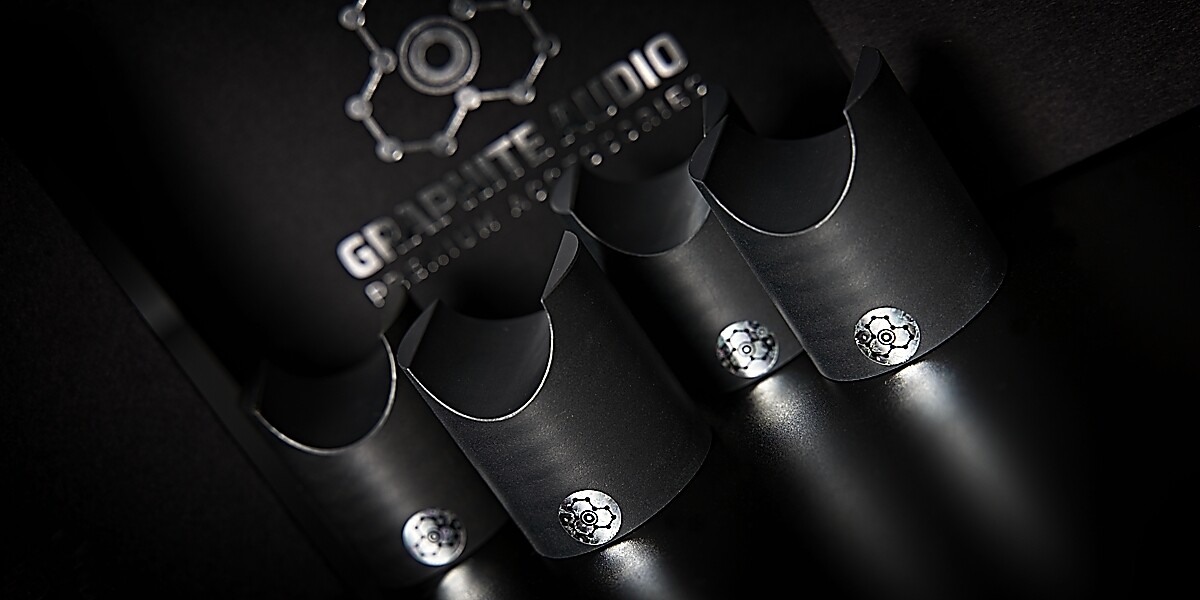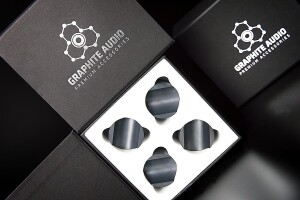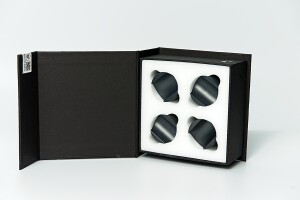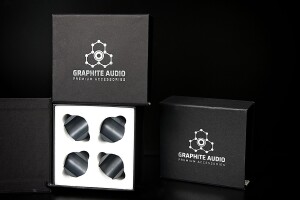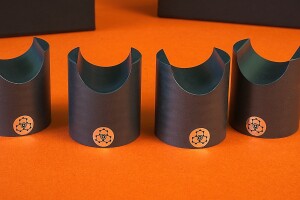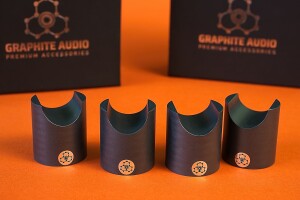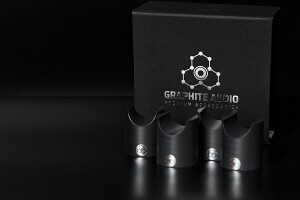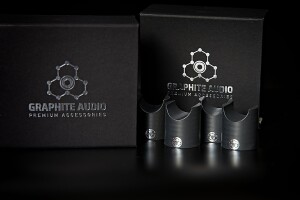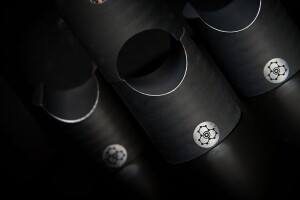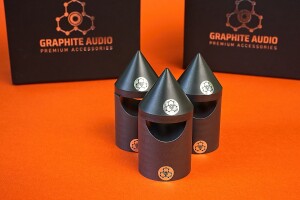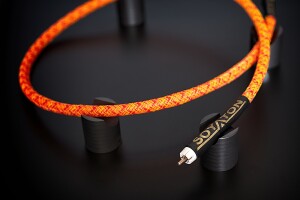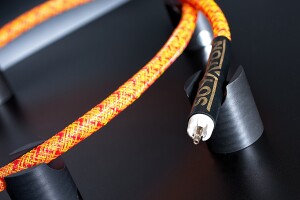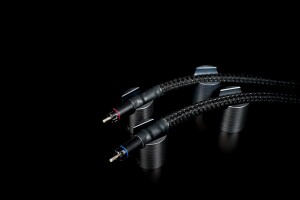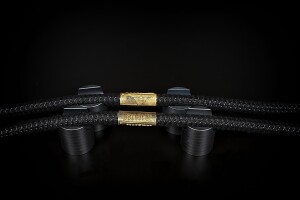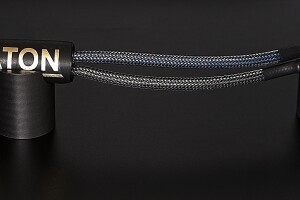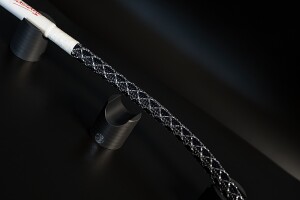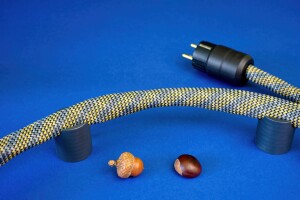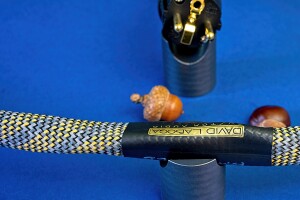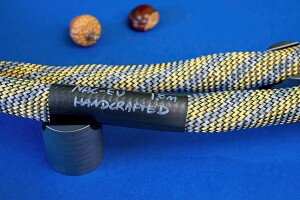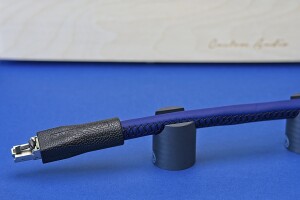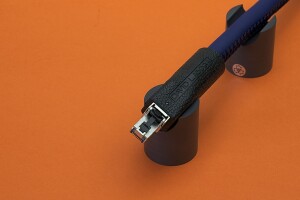A few months ago I reviewed the IC-35 anti-vibration cones of the young Polish brand Graphite Audio, for the HiFiKnights readers. The experience turned out to be so interesting that I didn’t hesitate to accept also the Graphite Audio CIS-35 cable stands for another review.
Introduction
I’ve had a long history with anti-vibration accessories in my system. I have used numerous products from various manufacturers and of different types usually appreciating their influence on my system’s performance. Until now, however, there have been no cable supports among them. My reference setup features racks by Rogoz Audio and Base, several platforms (by Franc Audio Accessories, Alpine-line, Base, and Rogoz Audio), and feet (by Franc Audio, Rogoz Audio, and after the aforementioned test, I also bought two sets of the Graphite Audio IC-35 cones). I have no doubts that each of these components added its two cents to the sound quality coming from my speakers.
In fact, I already had a chance in the past to test several types of cable supports (among them ones by the already mentioned Rogoz Audio), but so far I hadn’t kept any of them permanently. Why not, you may ask? It was not because they did not contribute anything to the performance, but because they did each and every time to a certain extent. Yes, I do realize, that there are still skeptics among music lovers who consider such products as some sort of an audio voodoo. Still, their numbers have been systematically decreasing over the years. Those who have refined, high-class systems and want to dot the ‘Is’ and cross the ‘Ts’ in them, sooner or later decide to give such products a try (which I always recommend – you should check them, or any other component, for that matter, out yourselves in your systems and base your decision on your own experience!). Many, if not most of them find in this way out, that such “accessories” can help them to squeeze a little bit more quality of their systems or in other words to realize more of their actual potential. Those who try and can’t hear any difference can treat such trials as an interesting experience and spend their money, for example, on music. After all, you can’t have too much of it.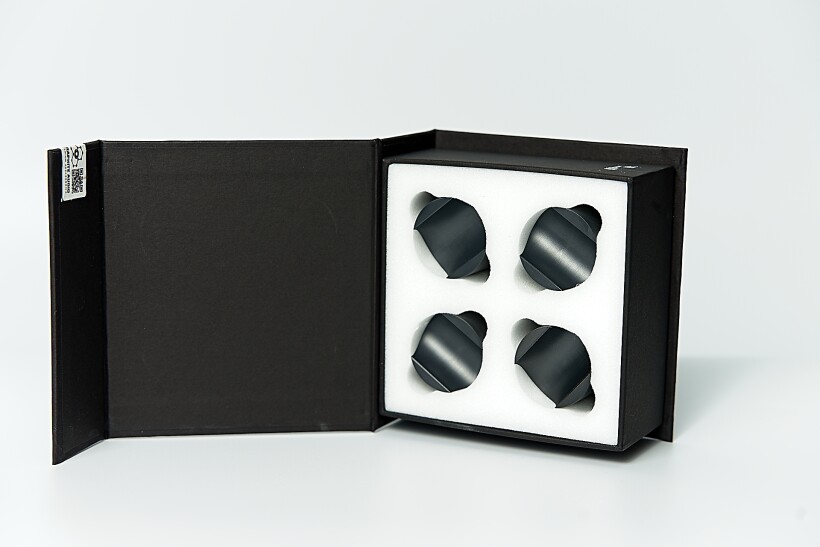
The main reason why none of the tested cables stands stayed with me was quite prosaic, Namely, there is not that much space there behind my rack as it’s rather ‘crowded’ due to a large number of cables that all need to fit in there. There was also the second reason in play – due to my reviewing job, I have to move (plug/unplug) the cables around quite often. In other words, I’ve never kept any of those stands because of practical reasons. I’ve never seen it as a final decision as I remember a conversation that took place several years ago in Munich, where my colleague and I talked to the head of Lavardin and Lecounture brands. We discussed, among other things, audio cables and he argued that their performance largely depends on what they are placed on (carpet, wooden floor, concrete, etc.). It’s about various factors, such as, for example, static electricity or interactions between different materials, that can influence performance. Hence, in his opinion, cable supports of some kind are absolutely essential.
So, let’s assume, at least for now, that cable stands may play some role in the system’s performance. Then comes the question of what cables are we talking about and what such stands should be made of. The answer to the first one is all audio cables that touch anything between the components they connect. In a word, if they are suspended in the air and do not touch anything, it’s all good (at least as long as they do not need to be supported due to their weight). In any other case, they should be supported/separated from the floor/rack/other cables. Although at first, you (me as well) may think mostly about speaker cables, the same actually applies to power and, if necessary, interconnect cables. As for the second question, there is no simple answer to it. The Japanese manufacturers, for example, most often use wood (not just any, but a selected kind with good anti-vibration properties). Other companies use more “technological” materials, or sometimes a combination of several of them with different properties.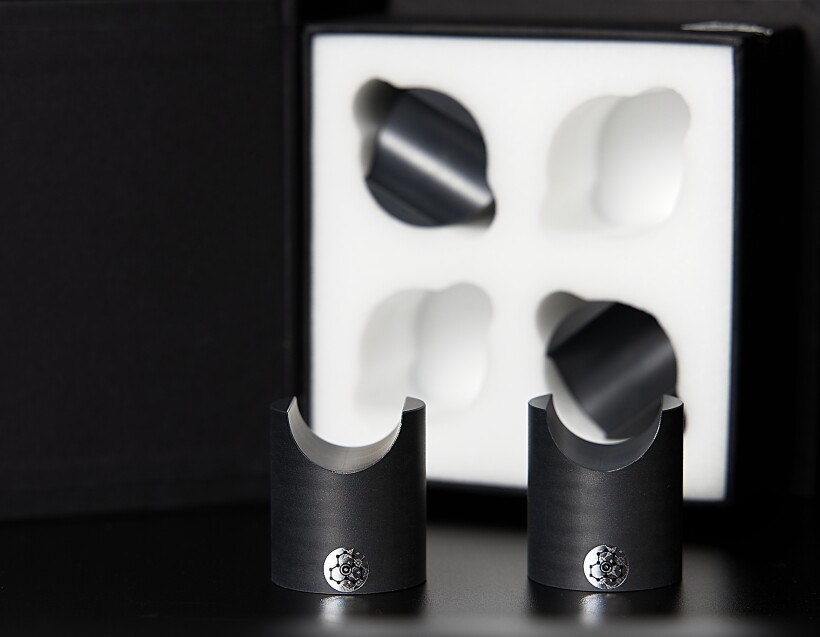
As all who either read the Graphite Audio IC-35 review (see HERE) or have already come across products of this brand, in the case of CIS-35 the material which they are made of is the same “proprietary” polymer mixed in certain proportions with graphite. The latter is the source of the brand’s name, as you can easily guess. Where did the choice of this material come from? As Szymon Rutkowski, the man behind this Polish brand, told me, in his opinion, most of the materials used in this type of application – metal, ceramics, glass – contribute their signature to the sound. A signature in this case means a coloration, and the goal of our young ambitious designer was to obtain the most natural and ‘high fidelity’ sound. The search for the right material took him 2.5 years, and when he finally managed to find it, it became the building material of all (at least for the moment) Graphite Audio products.
The first one was the IC-35 audio cone. The next one was the ISBS-40 spike support (used, e.g. for loudspeakers or other components with spikes), and the third one was the tested CIS-35 cable support (CIS, i.e. Cable Isolation Stands). The choice of the specific material was based on its properties – as the tests showed it perfectly damped vibrations, but the (contractual) disadvantage was its price. The latter factor surely contributed to the fact, that the CIS-35 cable stands are one of the smallest I have ever dealt with. The ones I’ve mentioned before, offered by Rogoz Audio are even called cable platforms due to their size and weight. Graphite Audio ones have a form of a low (40mm) cylinder with a diameter of 35mm, and it’s the upper surface is concave – that’s where a cable goes.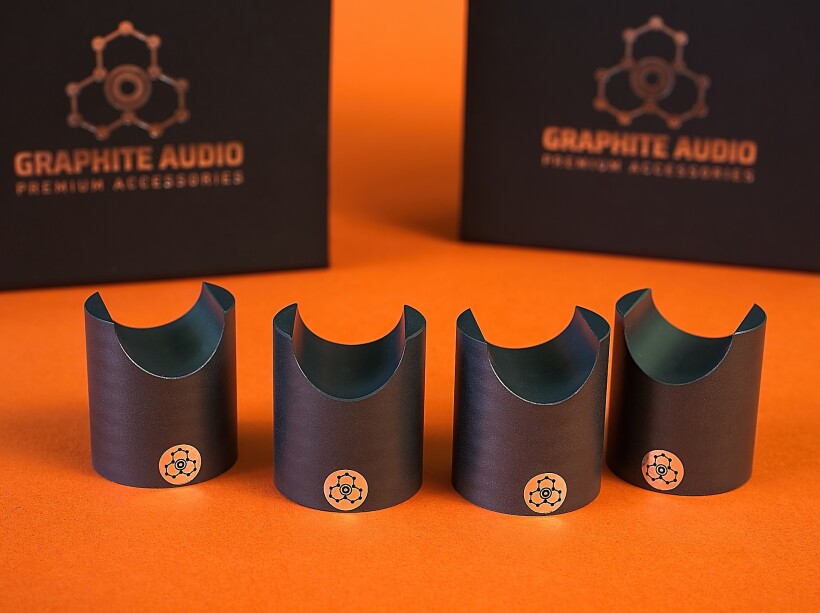
The manufacturer specifies the maximum diameter of the cables that can be used with the Graphite Audio CIS-35 as 25mm. In practice, this means that many, if not most (except the thickest) cables will fit there (I had no problems with any of those I used, but none of them belonged to the thickest hoses on the market). The low weight of these stands will force users to use caution when placing cables on them – you need to factor in the fact, that they relatively easily tip over. In a “normal” system, this shouldn’t be a problem as nothing will happen once you’ve got the cables placed on stands. Only when, as is the case with me (or any reviewer), the cables are constantly re-arranged/replaced, does one start to wish for heavier more stable supports. Ultimately, their influence on the sound/performance should be more important than the inconvenience related to their small mass. We’ll discuss what they do for the sound in a moment.
Graphite Audio CIS-35 are sold in sets of 4, packed in modest but elegant cardboard boxes lined with protective foam. The quantity needed for your system will depend on your specific application. For me, when used for speaker cables, I needed four pieces per channel. When I tested the CIS-35 with power cables, a lot depended on where the cable was plugged in (power strip/conditioner/wall socket), where the powered component was placed (on the bottom / top shelf of the rack), and how heavy and stiff the power cable was. In most cases, 2 pieces were enough, sometimes (e.g. with the flexible, but quite heavy top model of Bazodrut – pending review) I needed three CIS-35 for one cable. As you can see, the number of Graphite Audio stands you need is determined by the specific arrangement, but the point is to achieve a situation in which a said cable is supported only by these stands (it has to be plugged in on both ends too, obviously).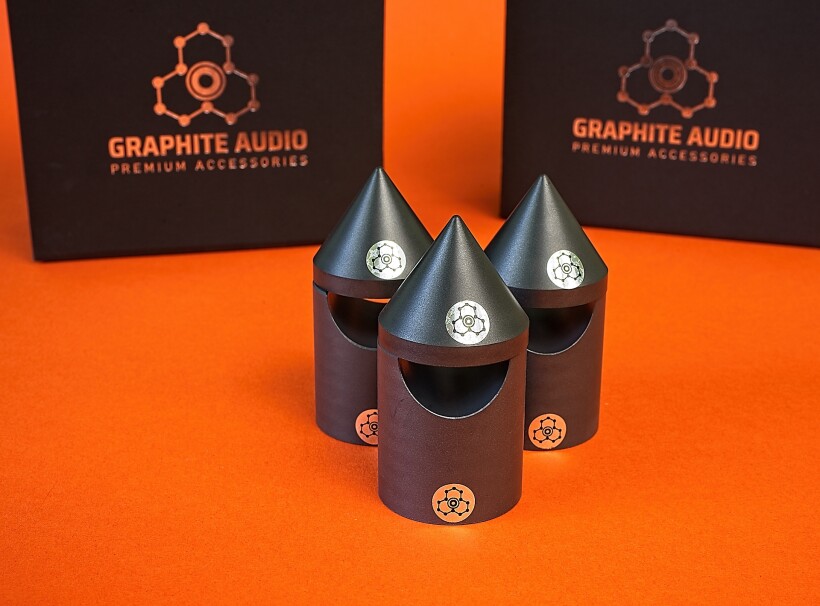
Sound
Those who read the review of the IC-35 cones may have noticed that the Graphite Audio CIS-35 cable supports were delivered to me at the same time. This implies already that the latter stayed with me even longer than the former ones before I even started writing this review. It was a result of many factors, among which quite an important one was me getting used to the presence of the CIS-35 under speaker cables. To be honest, at some point, a few months ago, I “installed” them there and … forgot about them. I only was reminded of their presence whenever I had to test some other speaker cables or switch speakers. Then, every time I had to take care about not destroying the carefully arranged stands behind the rack and make sure that the cables were still resting on the CIS-35. Once I did all that… I could forget about them again.
My sclerosis was one of the factors, the other was the feeling I’ve had from the start that this was the right place for the CIS-35 because, initially even without clearly defining what they did well, I knew that they were doing something for the system’s performance. This “something” made listening to the music simply better, more enjoyable. The sound seemed more natural to me with the Graphite Audio supports, and this has always been the aspect of the sound that I look for in every component.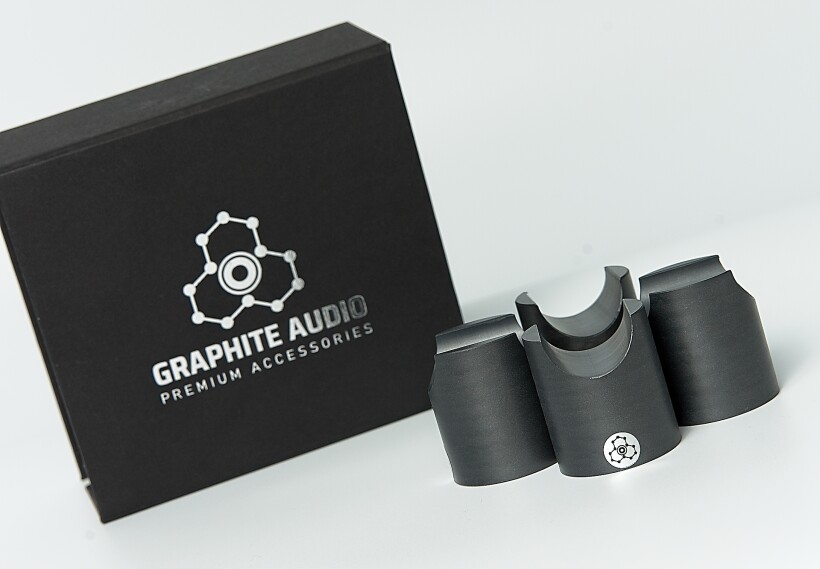
So when it finally came to testing the CIS-35 I conducted comparisons in an unusual way, because … the first thing I did was to remove the stands from under my LessLoss loudspeaker cables, where they’d spent quite some time already. This move immediately confirmed the old truth that we tend to easily get used to a better/higher quality sound, but we have problems with accepting even the slightest decrease in sound quality. It is true even if it means returning to the previously accepted, even highly valued, objectively still high level. Because, to be clear, without these stands the sound of my system after experiencing their influence on the sound, was still great, just the way I liked it. It’s just that with them it was even better, even more (the way I liked it).
So what was it exactly, that I’d got used to (involuntarily) while using the Graphite Audio CIS-35 in my system for quite a long time? Firstly, a higher level of sound energy, and secondly, a more orderly, clearer presentation with a better focus and control. Let me add right away, that I am not talking about any fundamental changes to the sound that redefined the class of the system, or were by any means comparable to the replacement of one of the main components in it. Still, they were sufficient to notice the difference, even more so when removing the stands than after adding them. Not having the Graphite Audio CIS-35 in the system after a period spent with them was, perhaps not so much a problem, but rather an inconvenience, something I could live with but it still felt better when I put them back in.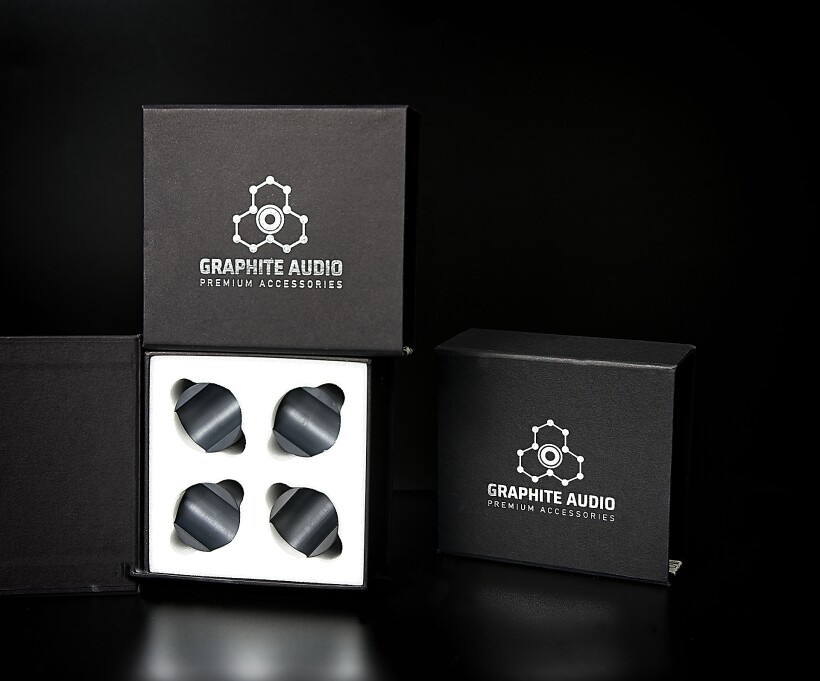
Now let’s circle back to the first improvement introduced by the reviewed cable stands – the reproduced level of sound energy. It (the lower level of sound energy) is one of the reasons why you can always, without a doubt, distinguish live music from recorded one. The whole process of recording and processing sound always deprives music of at least some of its natural, inherent energy. Yet another portion of it is often lost in the playback process. In refined, top-quality systems, these losses can be partially offset, which makes the music coming from the speakers sound more like live performances. The Graphite Audio CIS-35 used under speaker cables in my system (not only my own LessLoss ones but also ones by Soyaton and Bazodrut) performed just such a function – they limited sound energy losses. I hope it is obvious, that they did not add any energy to the sound by themselves. What they did was enough for the music to sound fuller, richer, more lively, and therefore more true. Let me repeat it once again – these are not big changes, but once you hear them they can be sufficient to consider the purchase of the Graphite Audio CIS-35 just for them.
The second of these most important changes introduced by the stands was higher clarity, and at the same time better control and focus of the sound. As there is actually no specialized audio thesaurus (although I know of some attempts to create them, at least in English) and therefore we sometimes interpret some terms differently, let me explain my meaning in this case. The clarity, I’ve mentioned, is not so much purity or transparency as such (although they are the elements that make up “my” clarity), but rather the clarity of the components of the sound. It results from both from the aforementioned higher energy of the music (and therefore also of the component sounds), as well as from its focus, from getting rid of minor distortions and coloration which also results in a better differentiation. All that combined created an impression, that with the CIS-35 stands the sound became a bit denser without warming it up, and at the same time it also got more precise. Whenever I took the Graphite Audio supports out … the sound seemed to blur a bit, some of the plankton, i.e. the tiniest pieces of information which, in their total quantity/mass, constitute, in fact, the refinement of the sound, disappeared. Long story short, even though the changes introduced by the Graphite Audio CIS-35 were not big, once I knew what they did to the sound I preferred to keep them in the system.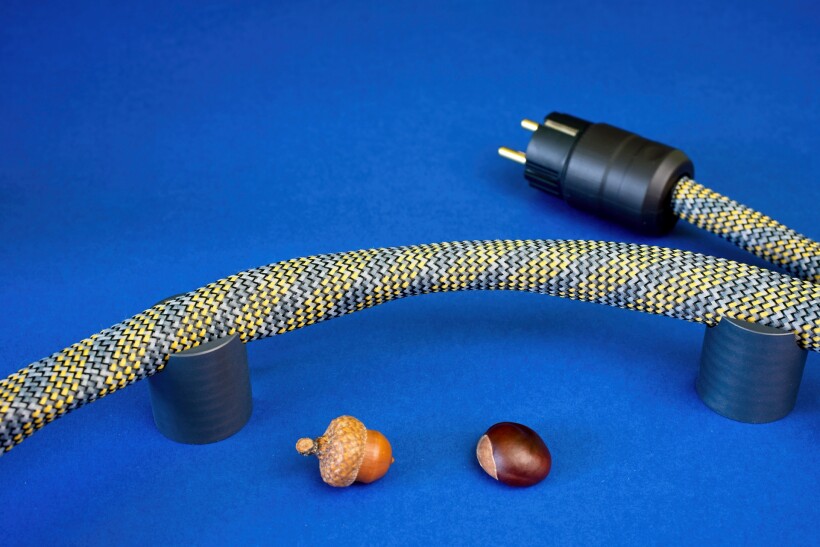
Even though it was more complicated, I decided that it was worthwhile to engage my mind and body in an exercise to figure out and then execute the idea, of how to try the Graphite Audio CIS-35 also with power cables. The problem was in the number of those used in my system, but also in the fact that most of them even without stands did not touch the floor at all, because the Gigawatt power strip and conditioner, also wall sockets, were placed rather low above the floor, and most of the components using those cables were placed higher in the rack. Ultimately, however, I figured out such a setup that allowed me to try the reviewed stands out also with the LessLoss cable, and later also with the top Bazodrut (under review). Each of them was plugged into a Furutech wall socket on one end and the Allnic Audio T-1500 mk II, i.e. an excellent SET featuring the magical 300B triodes integrated (see test HERE), on the other.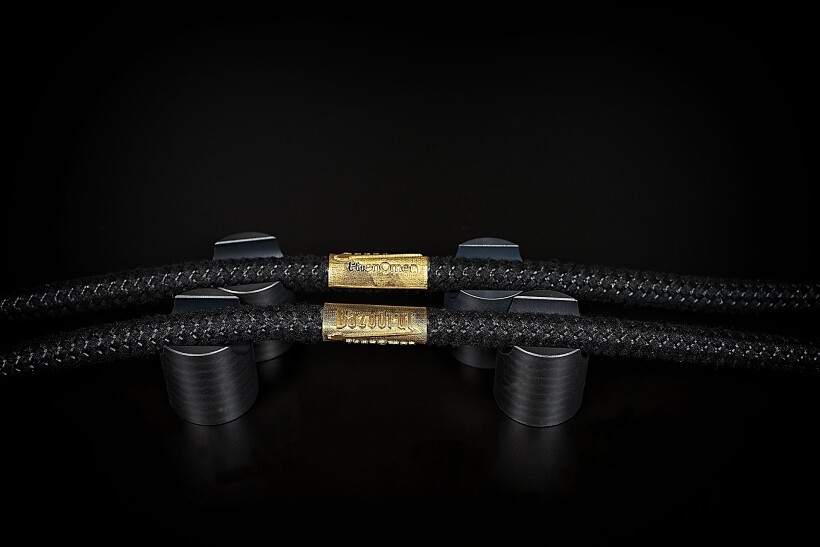
The influence on the sound of the powered device was actually similar to that described in the case of speaker cables. It’s just that now my attention was drowned more to the compactness, definition, energy, and differentiation of the bass range rather than the rest of the band. It was a natural tightness of the bass, to be clear, and not a forced one, as there was no artificial hardening of the leading edge. The thing is, that in the case of an acoustic bass the definition of attack improved, but the sustain and decay phases were as full and long as without the CIS-35 stands. The double bass, even in those recordings where it was slightly rounded, with the tested Graphite Audio became a bit tighter.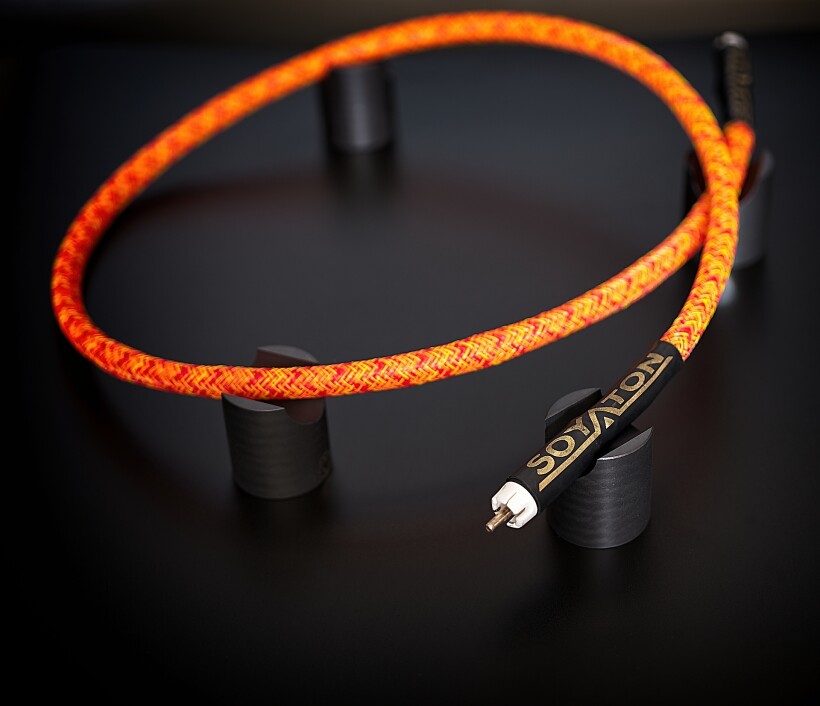
In the case of an electric bass, which is naturally tighter, it is easier to present it in such a way, so in its case what caught my attention was an irresistible impression that the sound produced by an electric bass guitar, played by, for example, Marcus Miller, carried more energy, that it was delivered with more powerful, better defined and a controlled punch. It was probably even more audible with the PhenOmen Bazodrut power cable than with my LessLoss, despite the fact that the Polish cable was much thicker, and this dimension of cables results from the use of thicker layers of insulation and vibration damping materials. Considering this fact, I expected its response to placing it on the CIS-35 to be less, not more noticeable. The PhenOmen in its nature (I mean how it affected the performance of the device it powered) was denser, more weighted, and after placing it on the CIS-35 set, the bass notes were even more focused, tighter without losing any of their mass and richness. The end result did not differ much from what I heard with this cable without the CIS-35 stands, but when using such an (spoiler alert!) excellent cable, each, even smallest, further improvement is worth considering.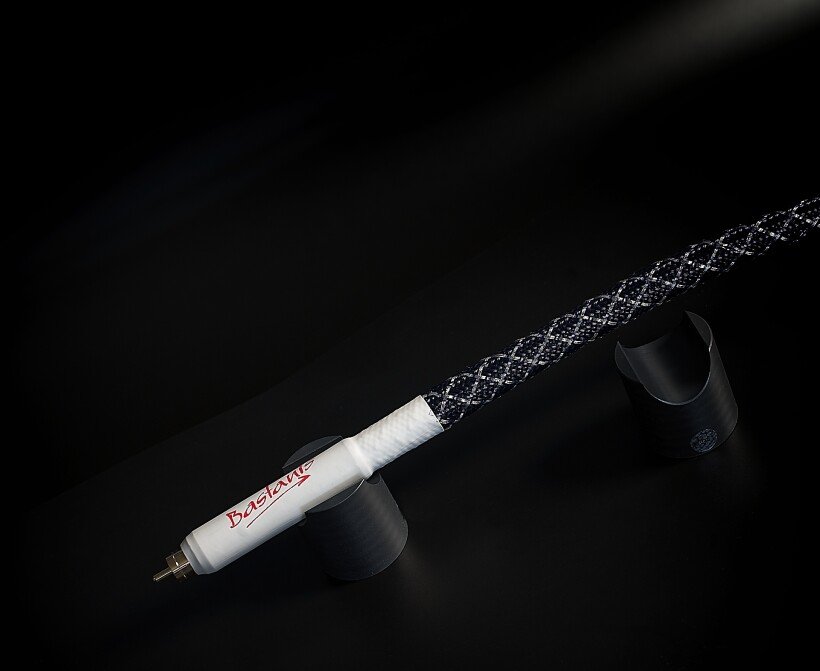
Before finishing my auditions of the Graphite Audio CIS-35 they landed under a long (3m) interconnect that connects my phono stage with the integrated amplifier (or preamplifier, depending on the setup). I have been using the TelluriumQ Ultra Black for several years there, but for some time I have been testing another cable in its place, the top, (another spoiler alert as a review is also coming) excellent (and much more expensive) cable from Robert Bastanis, called Imperial. It was the latter that I placed on (a total of) five Graphite Audio cable stands. Their impact on the sound was perhaps the smallest among all the applications so far. Among them, I noticed an even more focused, cleaner to the very bottom, bass, a more orderly sound presentation, and easier access to the tiniest pieces of information, which the stylus of my AirTight PC-3 cartridge so perfectly read from the grooves. The character of the sound remained basically the same – refined, incredibly resolving, open, smooth, coherent, and natural, and with the CIS-35 it ‘only’ became a bit more real, i.e., according to my definition of this term, closer to the live music.
Summary
The Graphite Audio CIS-35 is a visually inconspicuous product. These small, light, gray elements will probably not be the ones you will proudly present to your guests. They also do not belong to this type of audio component that you can use to quickly impress your fellow music lovers with. Using them won’t fix any problems in the system, and won’t produce an immediate “wow!” effect. These are clearly products intended for a long-term relationship.
The best way to appreciate what they can do for your system’s performance is to install them in your rig under selected cables for a longer period of time and then remove them. If it turns out that without them the sound lost some energy, tightness, precision, that you miss something that you may even have problems defining, that listening to music got just a bit less enjoyable, less immersive, you will have an answer to the question of whether it is a worthy addition to your system.
The Graphite Audio CIS-35 cable stands are the embodiment of that proverbial dot over the ‘i’. In many well-composed systems, not necessarily even from a high-end level, they will do their part and bring out a bit more quality and offer you a bit more fun while listening to the music and will do that without changing their character. So if you like the sound of your system but are open to trying to squeeze just a little more from it without interfering with the character of the performance, you should give the Graphite Audio CIS-35 a try. I doubt you will regret it even if it is not exactly what you’re looking for.
Price (when reviewed):
- Graphite Audio CIS-35: 499.00 EUR / set of 4 pieces
Manufacturer: GRAPHITE AUDIO
Associated equipment:
- Digital source: a custom passive server with WIN10, Roon, Fidelizer Pro 7.10, JCAT NET XE, and JCAT USB XE cards with FERRUM HYPSOS Signature power supply, KECES P8 (mono) linear power supply for the server, JCAT USB Isolator
- D/A Converter: LampizatOr Pacific +Ideon Audio 3R Master Time (USB signal regenerator)
- Analog front end: J.Sikora Standard MAX turntable, J.Sikora KV12 tonearm, AirTight PC-3, phonostages: Grandinote Celio mk IV, ESE Lab Nibiru V 5.
- Power amplifiers: GrandiNote Shinai
- Preamplifier: Audia Flight FLS1
- Loudspeakers: GrandiNote MACH4, Ubiq Audio Model ONE Duelund Edition.
- Interconnects: Hijiri Million, Hijiri HCI-20, TelluriumQ Ultra Black, KBL Sound Zodiac XLR, David Laboga Expression Emerald USB, David Laboga Digital Sound Wave Sapphire Ethernet
- Speaker cables: LessLoss Anchorwave
- Power cables: LessLoss DFPC Signature, Gigawatt LC-3
- Power: Gigawatt PF-2 MK2 and Gigawatt PC-3 SE Evo+; a custom power line with Gigawatt LC-Y in-wall cable; Gigawatt G-044 Schuko and Furutech FT-SWS-D (R)
- Network: Silent Angel Bonn N8 + Silent Angel Forester F1 + optical LAN isolator
- Racks: Base VI, Rogoz Audio 3RP3/BBS
- Anti-vibration accessories: ROGOZ-AUDIO SMO40 and CPPB16 platforms and ROGOZ AUDIO BW40MKII feet, Franc Accessories Ceramic Disc Slim Feet and Wood Block Platform


